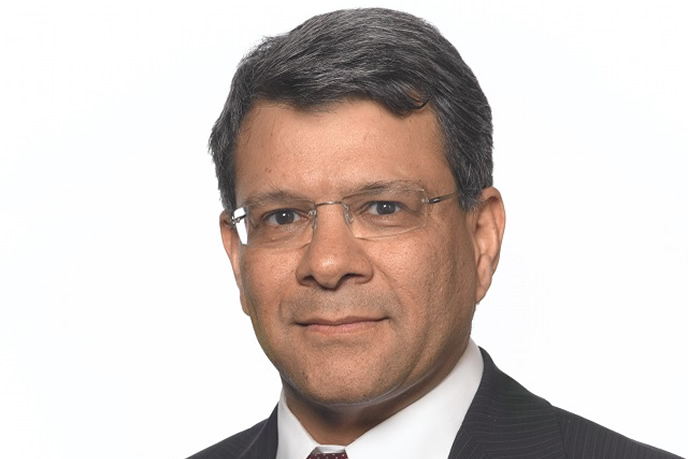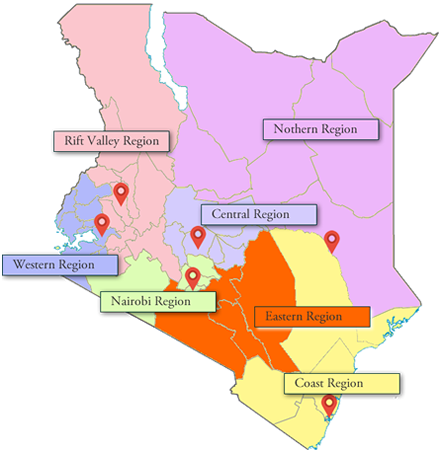
The Fight Against Counterfeiting is a Must Win Battle! - Op-ed
- News and Events
- Hits: 7789
Written by Mr. Pradeep Paunrana, Chairman of the Board, Anti-Counterfeit Agency
1. Presidential decree
The Anti-Counterfeit Agency and the manufacturing sector welcomes the executive order from President Uhuru Kenyatta during this year’s Jamhuri Day address to the nation. He made it clear that the growth of the manufacturing sector is the first pillar among the ‘Big Four’ of creating employment.
The executive order to investigate infringements on intellectual property rights and destroy counterfeits on sight is a pro-growth order since counterfeits are a major impediment to the growth of the manufacturing sector.
2. Scope of trade in counterfeits
Counterfeiting is a global supply chain problem. Counterfeiting and piracy are highly pervasive across countries and sectors, representing a multi-billion-dollar industry globally that continues to grow. The Organization for Economic Cooperation and Development (OECD), estimate that the value of international and domestic trade of counterfeit and pirated goods range between US$923 Billion – 1.13 Trillion in 2013 and is expected to grow to between US$1.90 -$2.81 Billion come the year 2022. This represents between 5% and 7% of the world trade. This is a very conservative estimation, since it did not include pirated digital products.
Kenya’s manufacturing sector has had its own share of the wrath of counterfeits. The Standards and Regulatory Committee of the Kenya Association of Manufacturers (KAM) estimates that counterfeit and substandard products cost the East African region over US$500 million in lost government tax revenue annually. Tanzania is estimated to lose about US$ 1.5 billion in revenue to counterfeits. Other statistics going by conservative estimation from the KAM study on counterfeits conducted in 2012 indicate 40% of their sales are lost annually as a result of trade in counterfeits. Again in Kenya, the Information Technology (IT) industry is estimated to deliver US$20 million in tax revenues between 2008 and 2011. During the period, if Kenya’s 80% software piracy rate were reduced by 10%, the multiplier effect would have generated over 1,100 additional jobs, US$12 million more in tax revenues and US$163 million spending in the local IT sector over the four years. On the other hand, the Anti-Counterfeit Agency estimates that about 1 in 5 products sold in major towns in Kenya are counterfeit.
From the several depots of the Anti-Counterfeit Agency, you will find a wide array of counterfeited goods. They include food and beverages, tobacco products, LPG and petroleum products, computer components and software, designer clothes and shoes, mobile phones and radio sets, motor vehicle parts, shoe polish, cosmetics and medicines, dry cells, soaps and detergents, and bulbs. Counterfeited medicines and cigarettes are among some of the prized products that pass through Kenya into the regional markets with some spilling over to local consumers.
3. The case for protecting Innovation and manufacturing globally
With counterfeiting being carried out on a global scale, Kenya and many other developing countries remain major markets. The way forward is for developing economies to use all means and approaches possible to promote and protect innovation and manufacturing. Economists have recognized for decades that the most important determinants of long-term economic growth are innovation and adoption of new technologies. These, in turn, are known to spur the competitiveness of the manufacturing sector which is crucial for wealth and employment creation.
To be competitive, policymakers should strongly encourage the protection and enforcement of intellectual property. In the words of H.E President Kenyatta, this is “the bedrock on which we will achieve a robust manufacturing sector”. It is the most appropriate permanent framework for a competitive economy since economic prosperity and intellectual property rights are inextricably linked.
4. Impacts of trade in counterfeits
According to the United Nations, about 46 per cent of Kenya’s 47 million people live in poverty and this is the group targeted by the distributors of counterfeit products who price them to fit into the pockets of the poor.
Other than the loss in trade values attributed to counterfeiting internationally, there is unquantifiable loss of brand value due to unmet consumer expectations, which border on quality, efficiency and importantly health and safety concerns. In addition, there are overwhelming social impacts like crime, terrorism, money laundering, human trafficking, and loss of employment. The economic effects to the owner of the intellectual property threaten a profitable legitimate industry as they affect the business’ bottom line.
The World Health Organization (WHO) estimates that counterfeit drugs with wrong ingredients, incorrect amounts of the proper ingredients, or no active ingredients whatsoever account for 10 per cent of all pharmaceutical products sold in the world, and up to 60 per cent of all drugs sold in the developing countries. The serious risks of counterfeit medicines to public health and safety have often resulted in accidents and death in some instances.
5. Agency Preparedness
No single entity can effectively enforce anti‐counterfeiting measures within and across national boundaries or the entire continuum of a global supply chain.
Subsequently, the Agency has put in place the following strategies:-
- Intelligence-led inspections. The Agency has put in place an intelligence-sharing infrastructure to curb the influx of counterfeit goods through the ports of entry.
- Cross-collaboration among regulatory agencies and across the borders. This entails collaborations among law enforcement agencies locally, and internationally such as Interpol in joint enforcement operations within the country and across geographical regions. Business organizations like the Kenya Association of Manufacturers (KAM) and the Business Action to Stop Counterfeiting and Piracy (BASCAP) at the global level are equally important.
- E-commerce monitoring. We have moved to strengthen oversight of online sales of counterfeits. We encourage consumers to report online counterfeiting and monitor the internet and make it easier for the public to alert the agency of any illegal activity.
- Private‐sector collaborations. The Agency has partnered with the private‐sector in pooling resources towards developing effective public‐private partnerships to combat global counterfeiting.
- Change of mindset. The Agency has put in place a robust public outreach and training programs towards addressing the demand for counterfeit goods through a change of attitude for consumers and other stakeholders. This is complemented by research and market intelligence to inform policy and decision making.
- Harmonization of regional laws and policy on counterfeiting. The Agency has participated actively in advocating for regional harmonization of the intellectual property regime in the East African Region.
- According to a report by the World Bank titled ‘Benchmarking Public Procurement, 2016; Developing country governments spend an estimated USD 820 billion a year, or 50 % of their budgets on procuring goods and services. Considering the influx of counterfeits in the market; the government being the largest consumer is vulnerable to acts of counterfeiting. This may have serious economic, security, safety and health implications. We are in the process of incorporating the provisions of the Anti- Counterfeit Act 2008 in Public Procurement and Disposal laws and pursue its implementation by way of mainstreaming through National performance contracting to all government institutions to curb counterfeiting within their jurisdictions.
6. Conclusion
Although the Agency has made a lot of progress to curb trade in counterfeits, a lot more still ought to be done to win the fight against all forms of illicit trade. First, there is need for a national baseline survey to evaluate the scope and magnitude of illicit trade and their effects. This is critical for evidence-based decision making by policy makers.
Secondly, since Kenya's trade is highly dependent on the region, we must put up bold decisions to counter illicit trade by unscrupulous local and foreign traders and manufacturers. We should not only focus on trade in counterfeits but also other forms of illicit trade including, smuggling, substandard goods, transit fraud and dumping and trade in prohibited goods and products. As we embrace the open borders for regional trade, we should not make it easier for illicit trade to happen.
The president’s directive under the “Big- four Agenda” will present a great opportunity for Kenyans and the manufacturing sector to benefit from job creation and inclusive economic growth. Let's make manufacturing everyone's business. Together we can win the battle!



